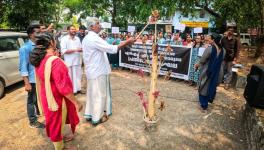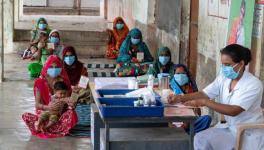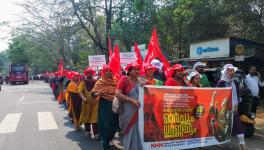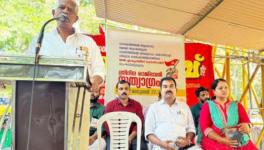NHM Fails to Mobilise Men For Sterilisation Reveals CRM Data
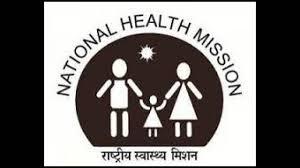
Image Coutesy: Safalta
A National Health Mission report released on Monday stated that 93 per cent Indian women face the burden of family planning through the sterilisation methods whereas only 6.80 per cent men opted for population control methods. The report showed that male sterilisation facilities are still unavailable as well as inaccessible to the people across the country.
The 11th Common Review Mission of National Health Mission, conducted with the help of officials from the Health Ministry, health experts from civil society, academic institutes and UN agencies, showed that out of 14,73,418 sterilisation procedures only 6.8 per cent men volunteered for male sterilisation. While the data showed an improvement in male sterilisation, the data cited that unavailability of sterilisation centres remains a big riddle in achieving higher participation of men.
“Women continue to bear an uneven burden of the terminal methods of family planning and sterilisation. As per HMIS in 2017-18 (till October) of the total 14,73,418 sterilisation procedures only 6.8 % were male sterilisation while 93.1 % were female sterilisation,” stated the report.
The report cited that there are no male health workers to encourage men to opt for sterilisation methods. The impression of losing the masculine strength was also found to be one of the main reasons for low male sterilisation. The problem becomes complex as most Asha female workers are left with the responsibility of counselling men on the issue.
The team conducting review mission also found that most states offered sterilisation services at fixed places on fixed days except Uttarakhand, Jharkhand, Nagaland and Manipur. It must be reminded that the male sterilisation methods, such as vasectomy, is much easier to perform in comparison to Tubectomy or sterilisation methods for women.
Another concern that was highlighted by the report remained higher out of pocket expenditure spent by households on chronic diseases like Diabetes and Hypertension. The report stated that the diagnostics and lab tests in Telangana and Nagaland cost people the most. Given the high prevalence of Diabetes with more than 50 million patients, rising out of pocket expenditure reflects a crumbling public health system.
“Household out of pocket expenditure (OOPE) remains a major concern. Despite the implementation of various schemes such as free drugs and diagnostics in government hospitals, instances of high OOPE were reported in most of the states visited.
Patient/beneficiary interactions during state visits show high OOPE on drugs for chronic diseases such as diabetes and hypertension in Assam and Uttar Pradesh; on diagnostics and lab tests in Telangana and Nagaland and informal payments to hospital staff for the patient care and transportation in Uttar Pradesh,” stated the report.
Get the latest reports & analysis with people's perspective on Protests, movements & deep analytical videos, discussions of the current affairs in your Telegram app. Subscribe to NewsClick's Telegram channel & get Real-Time updates on stories, as they get published on our website.









